3 Principles for Yoga Knee Safety
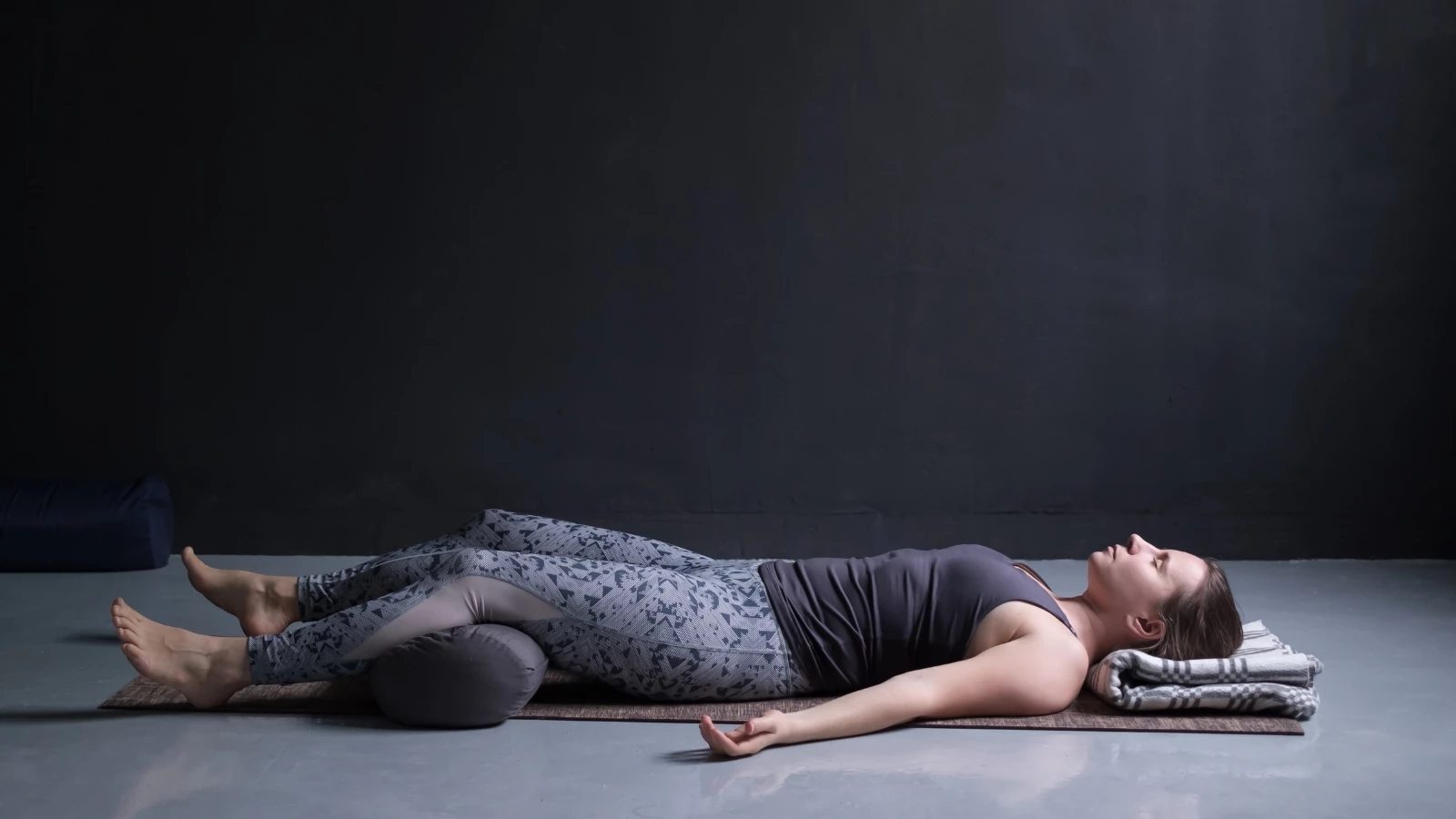
Article At A Glance
That twinge in the front or one side of your knee—ouchie—it’s now fun. The twinge might run up to the lower thigh or down to the upper shin. Regardless, knee pain is rather common in generally healthy adults. Can yoga help, or can it exacerbate the problem? It really depends. With yoga knee safety principles, we can avoid intensifying existing misalignments. And we can find the balance of mobility and stability that blooms into enhanced joint health.
A Few Possible Causes of Knee Pain
Here’s little anatomy, to help make the picture even clearer. The knee is a hinge joint, with primary motions of flexion—decreasing the angle between the tops of the calves and hamstrings, and extension—increasing that same angle. The joint can also move laterally, however. Lateral movement, and the slight twisting at the joint that it makes possible, is necessary for knee function as we know it. But it can leave room for habitual misalignments.
Particularly in cases of hypermobility (most often characterized by long, loose ligaments and tendons), what can result is repeated misalignments that wear down on the joint. For example, misalignments can wear down the knee joint’s cartilage, which is vital for smooth, pain-free functioning of the joint. What happens then? You may have guessed it: pain, tingling, and reduced functioning of the joint.
On the other end of the spectrum, lack of mobility can cause the body to try to find degrees of motion where it isn’t meant to come from, a phenomenon called compensation. That’s another cause of misalignment that can cause pain and reduced functioning if it becomes habitual. Muscular imbalances, such as the inner quad muscle (vastus medialis) being weaker than surrounding muscles, can also at times lead to knee joint misalignments.
Yoga Knee Safety: Way Beyond the Knees
We should also keep in mind that knee safety matters beyond the physical. Knee pain, if it becomes chronic, can detract from our psychosocial health through feelings of discouragement, not engaging in the activities and with the people that we enjoy, and (more severe, arising in some cases) depression. (1)
In the physical, mental, and spiritual, yoga is a practice toward long-term holistic wellness, for longevity. With our knee health and far beyond, our practice can lead us in that direction rather than compromising that goal—if we stay mindful and work with wisdom (use yoga props for added comfort). Let’s look at some ways to do that with guidelines for knee-safe yoga.
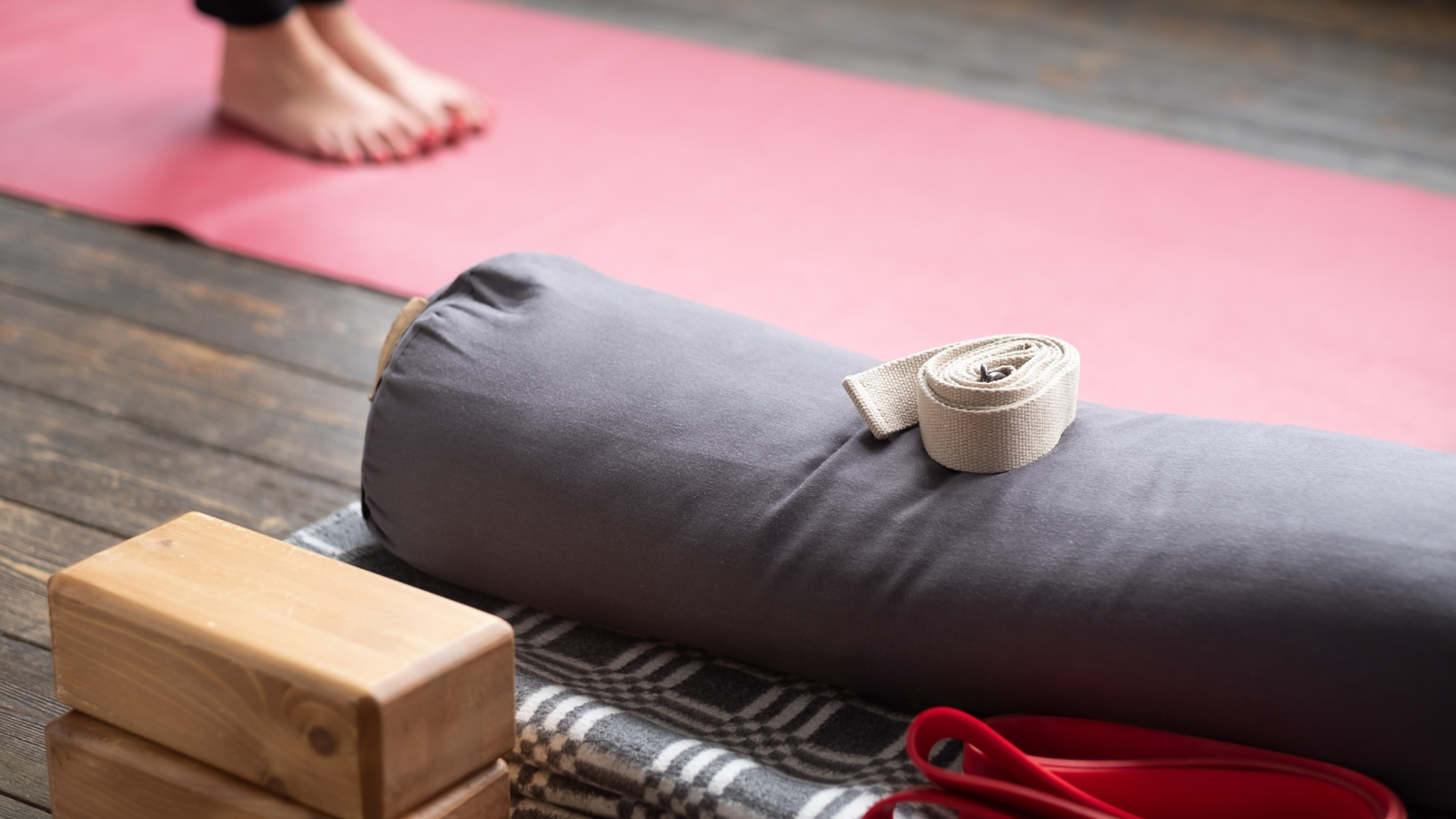
3 Tips for Yoga Knee Safety
1. Reduce Flexion for Yoga Knee Safety
Our knees can certainly ache or twinge in yoga asana (poses) with a high degree of knee flexion. These include Pigeon Pose (Eka Pada Rajakapotasana) to Low Lunge Pose (Anjaneyasana) to Warrior II Pose (Virabhadrasana II). If we reduce the angle of knee flexion or increase the angle between the back of the calves and the lower hamstring area, that ache or twinge can lessen.
Pain is a sign of something not great happening in the body. It’s a signal from the body to remove whatever force or factor is causing the body harm. As such, that pain lessening is a sign that whatever misalignment or other potentially dangerous thing was happening is no longer happening, or at least not to the same degree.
The body knows. We just have to learn to listen and then appropriately respond. Be aware that misalignments that can lead to overuse issues don’t always offer a pain warning signal. One example of that is the shoulders dipping below the elbows in the Four-Limbed Staff Pose (Chaturanga Dandasana). That’s why it’s important to keep learning about biomechanics involved with yoga asana and be open to adjusting how we practice in order to ensure optimal safety and function for the long term.
How to Reduce Knee Flexion in Yoga
What might all of that look like in our practice? Simply put, it comes down to knee alignment. We can slightly reduce how deeply we bend into the front knee in Warrior I or II. In Pigeon Pose, we can draw the front foot a bit closer to the pelvis. It’s okay that this contradicts the common cue to make a 90-degree angle from hip to foot in the front leg of Pigeon Pose. This cue could actually be harmful to that front knee.
In Hero’s Pose (Virasana), one can sit on a block or rolled blanket to slightly raise the hips. All of these modifications reduce the degree of knee flexion, which can reduce the knee tenderness that some yoga practitioners experience in these poses.
Here are a few other examples of poses that might pose a risk for extreme knee flexion. In my personal practice, things such as grabbing the flying foot in Bird Dog Pose (Dandayamana Bharmanasana) or Half-Moon Pose (Ardha Chandrasana), as well as pointing the toes of the extended foot up to the sky in Low Side Lunge Pose (Skandasana), cause me pain in that same knee.
I modify these by omitting the bind—simply letting the lengthened leg stay long—in Bird Dog Pose and Half Moon Pose. In Skandasana, I’ll keep the foot of that lengthened leg fully on my mat. I’ll also push through the pinky edge of that foot, which further stabilizes that leg, including the knee joint, just as it does in Warrior II or Triangle Pose (Trikonasana).
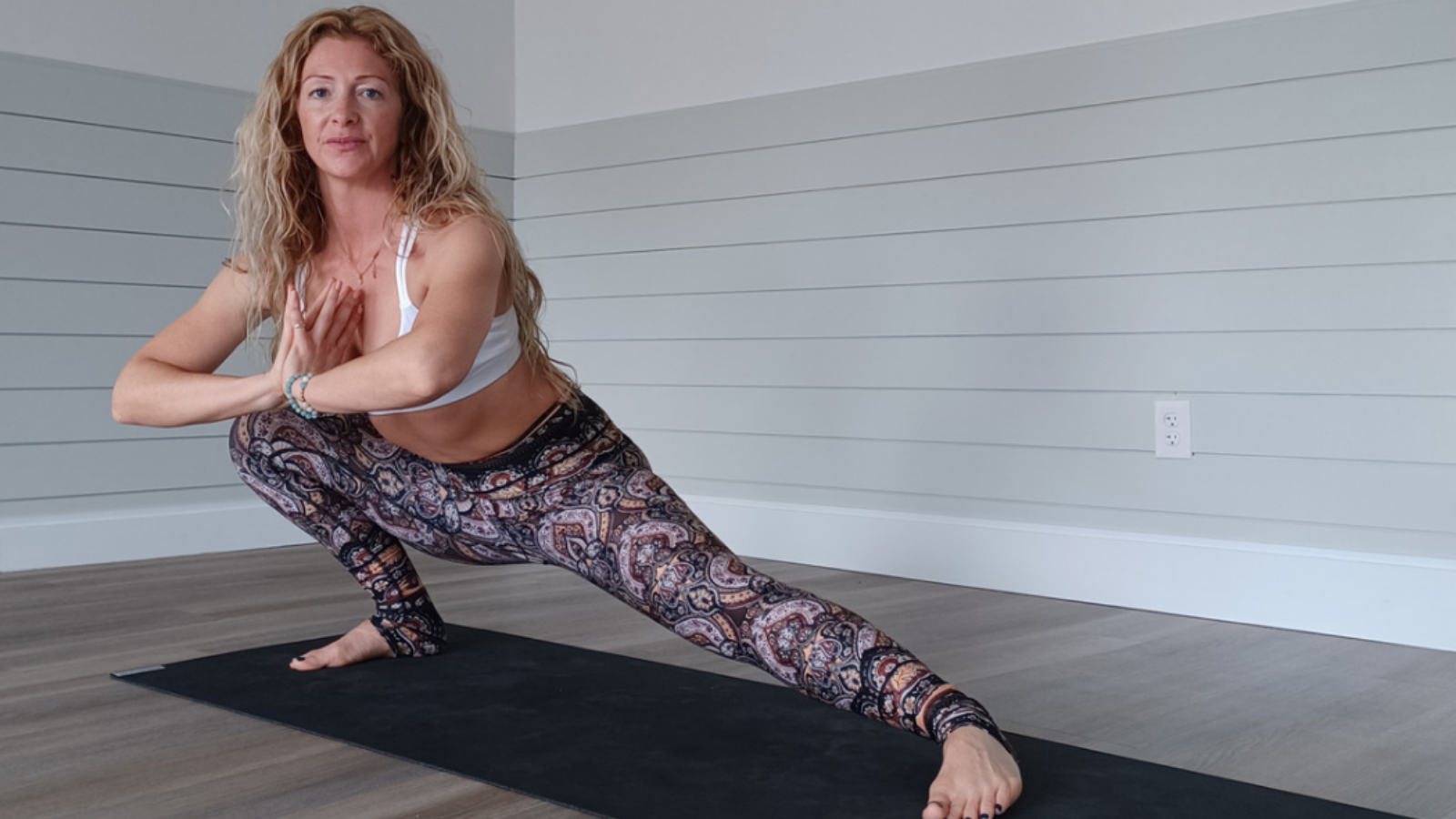
These are all modifications that you can try if you experience similar knee pain in your yoga practice. The concepts here might also apply to further poses that you encounter as you continue to learn and deepen your practice.
2. Keep a Little Bend So You Don’t Hyperextend: Yoga Knee Safety with Stretches
Has your yoga instructor ever cued you to keep a little bend in your front knee, in a pose like Half Split Pose (Ardha Hanumanasana), Triangle Pose, or Pyramid Pose (Parsvottasana)? That’s for a reason. If done repeatedly, hyperextending the knee joint in those poses can wear down the knee joint’s cartilage, which is necessary for smooth, pain-free functioning.
Those who are hypermobile are at even greater risk of that happening, and need to be even more conscious of keeping that knee “mini-bend.” Hypermobility also comes with the need to not make ligaments any longer than they already are, because that comes with even less joint stability. Hyperextension can compromise joint stability for those who are already hypermobile.
I describe that knee “mini-bend” to my students as keeping that front knee soft rather than locked, the leg straight but with a little “give” in the knee. In order to override a hyperextension pattern, students need to train their muscles to engage in a way that creates that soft knee joint. Using props can be a mental reminder. Over time, props can help prevent joints from dropping into unsafe alignment.
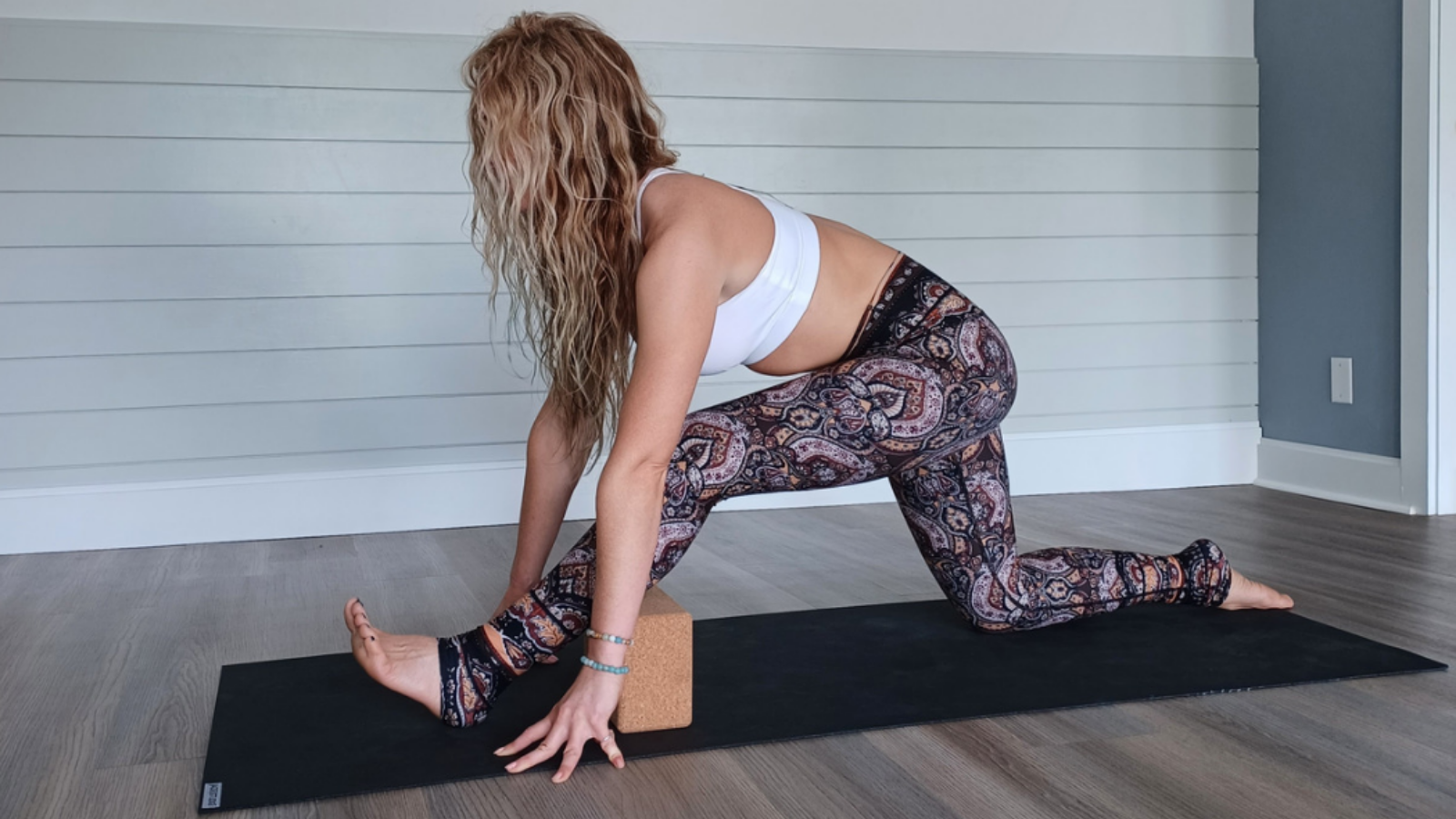
How to Use Props for Yoga Knee Safety
It can be helpful to put a block at the back of the calf in Trikonasana. Place it at the very bottom of the belly of the calf muscle, and angle it to rest on one corner so that it stays in place there. One can similarly prop Ardha Hanumanasana by placing a block just below the back of the knee, or between the ankle and the bottom of the calf. These knee alignment exercises can be helpful for training oneself away from hyperextension and toward safer, more sustainable knee alignment.
Of course, everybody is different. Proportions, muscle sizes, and other physical factors can vary. If you’re a teacher, work with your student(s) and be open to seeing what’s right in front of you. Then respond to the best of your knowledge and intuition. If you’re a student, ask thoughtful questions and be honest with your instructor(s) about what you’re feeling.
In either role, notice what’s happening in the body with non-judgment, non-attachment, and Asteya (truthfulness). Do what you need to support your body, not only for this moment but also for the long term.
3. Don’t Shear: Your Knee isn’t Making Guacamole
Why am I referencing guacamole here? Good question. I promise I’m going somewhere with that. Transitions such as Warrior I to Warrior II, as well as Standing Split Pose (Urdhva Prasarita Eka Padasana) to Ardha Chandrasana, are popular in modern Vinyasa classes. What ends up happening there is that the femur of the standing leg twists, while the tibia (the other part of the joint) doesn’t: an action called shearing.
The knee becomes like a mortar and pestle in that action. The bottom part of the joint is still while the top part slightly twists like it was mashing up spices and avocado. That becomes a problem if we do it over and over again because it can wear away knee joint cartilage. Generally, an occasional Warrior I to Warrior II transition in your practice isn’t a big problem. (Of course, there are exceptions there, because we’re all different.) But it could be a problem if we practice it habitually.
Anatomically speaking, in order to avoid shearing we want to refrain from shifting from internal rotation to external rotation at the hips, for example, from Standing Split Pose to Half Moon Pose, or vice versa. At the very least, it’s best to go slowly and mindfully through such transitions, with as much support for the associated joints as possible.
Sequencing and Practice Pointers for Avoiding Shearing: Standing Pose Transition Variations
This is key if you’re sequencing for your students or designing your own home practice. You need to create as much support for joints as possible as you move the hips from internal to external rotation. That’s mindful yoga knee safety.
For instance, when moving from Warrior I to Warrior II, place your hands down on your mat and open your hips toward the long edge of your mat versus facing toward the top/short edge. Then raise your torso back to fully vertical.
You could simply raise your torso, engaging your low belly to support the action and the spine through the transition. Another option is to “windmill” the back arm (moving it forward, up, and back) to add a little movement through the shoulder joint, with your torso naturally following your arm to end up vertical. That gives your joints more points of contact for support through the transition, and thus reduces shearing risk.
Standing balance transitions, from Standing Split Pose to Half Moon Pose, or Tree Pose (Vrksasana) to Warrior III Pose, are other knee challenges. There’s no “rule” that says one must transition directly from one pose to the other, even though that contributes to the fun, creative flows in Vinyasa posture practice. Instead, let the flying leg come back down to your mat and then move into the second standing balance posture. The joints then have the point of contact of the floor/mat through the internal to external rotation transition, creating less shearing risk.
Yoga Knee Safety: Yoga Practice with a Focus on Longevity
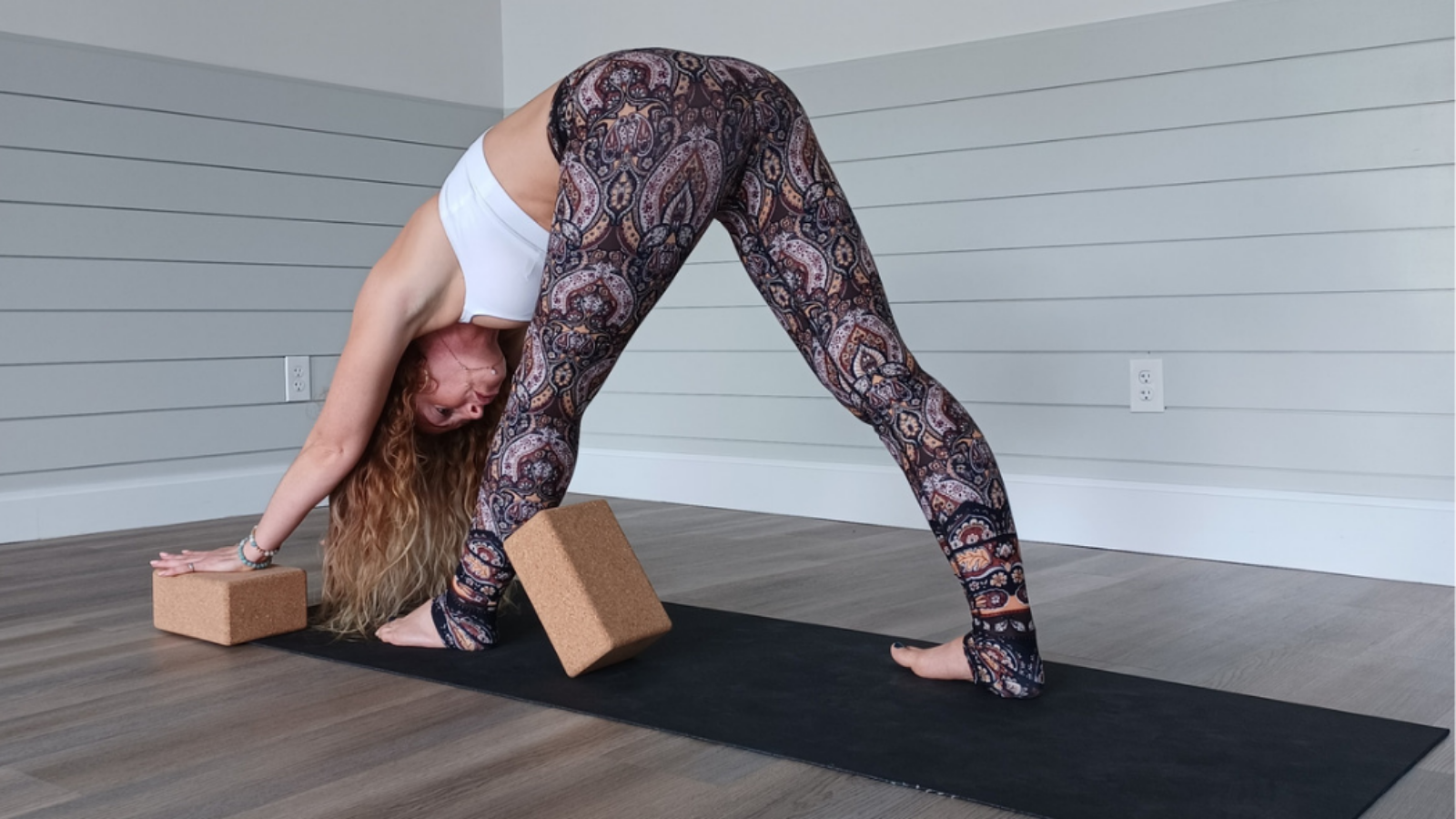
Such mindful choices contribute to the longevity of our joints, rather than focusing simply on our experience in the moment. Yes, awareness and care toward our present-moment experience is fundamental to yoga practice. Of course, it’s not something to brush aside. Yet Ahimsa (non-harming), non-attachment, and care toward larger and longer-term impacts are also part of our practice.
We can practice yoga knee safety to contribute to caring for ourselves overall. This can enable us to continue doing yoga long and strong, and then be at our best to do the work in the world that we’re meant to (our dharma). I’m excited about continuing to practice for the present moment, but also for the long term, and I hope that you are too.
Also, read...
Teaching Svadhyaya: 3 Ways to Encourage Self-Study in Yoga
In Celebration of Gray-Haired Yoga – Busting the Myth of the Yoga Body
Related courses

Kathryn Boland is an RCYT and R-DMT (Registered Dance/Movement Therapist). She is originally from Rhode Island, attended The George Washington University (Washington, DC) for an undergraduate degree in Dance (where she first encountered yoga), and Lesley University for an MA in Clinical Mental Health Counseling, Expressive Therapies: Dance/Movement Therapy. She has taught yoga to diverse populations in varied locations. As a dancer, she has always loved to keep moving and flowing in practicing more active Vinyasa-style forms. Her interests have recently evolved to include Yin and therapeutic yoga, and aligning those forms with Laban Movement Analysis to serve the needs of various groups (such as Alzheimer’s Disease patients, children diagnosed with ADHD, PTSD-afflicted veterans – all of which are demographically expanding). She believes in finding the opportunity within every adversity, and doing all that she can to help others live with a bit more breath and flow!




